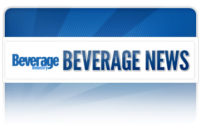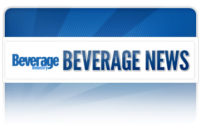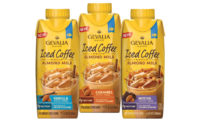Discount retailers increase their market share
Store openings, growing acceptance contribute to channel success.

Similar to how fast food restaurants added dollar or value menus in order to entice consumers, the value proposition for discount retailers has helped dollar retail
|
|
chains gain market share against traditional retail formats.
According to Chicago-based Information Resources Inc. (IRI)’s August 2012 Times & Trends report, “Channel Migration: Charting a Course on the Voyage for Value,” the dollar channel had a 2012 household penetration rate of 65.1 percent, a 1.3 percent increase compared with 2011. The market research firm’s report explains that supercenter and dollar store channel gains have been supported by consumers’ search for low-cost products.
“Dollar store penetration has been on an upward trend for several years now, and two out of three Americans shopped the dollar store channel during the past year,” according to the Times & Trends report. “Penetration growth is, in part, due to the growing acceptance and prevalence of dollar store outlets.”
The report also credits additional store openings as well as other strategies for the growth.
Last year, Family Dollar Stores Inc., Matthews, N.C., announced a multi-year partnership with Purchase, N.Y.-based PepsiCo Inc. to sell its beverages in its 7,100 stores across 45 states. This multi-year partnership provides Family Dollar customers with more beverage choices while expanding the retailer’s base of national brands, the companies said.
“Family Dollar is a progressive-thinking organization that brings the right brands to its shoppers, leading to customer satisfaction and loyalty,” said Al Carey, chief executive officer of PepsiCo Americas Beverages, in a statement. “We appreciate the opportunity to serve Family Dollar stores with our brands. It offers Family Dollar consumers a choice and will also give us the opportunity to see a full array of PepsiCo beverage brands alongside our Frito-Lay snacks.”
Through the partnership, the retail chain was able to give its consumers access to the PepsiCo Americas Beverages portfolio. “At Family Dollar, our goal is to provide our customers with choice, value and convenience,” said Michael Bloom, president and chief operating officer of Family Dollar, in a statement. “Our partnership with PepsiCo complements our current offerings and gives our customers more of their favorite beverage products, including Pepsi, Mountain Dew and Lipton teas.”
The channel also has seen an increasing number of storefronts. Earlier this year, Dollar General Corp., Goodlettsville, Tenn., announced that it plans to add 635 new stores and 550 relocations.
Other branded chains also continue to announce expansions. Chesapeake, Va.-based Dollar Tree Inc. reported that it opened 47 stores, expanded or relocated six stores, and closed six stores during the three months ending Feb. 2, while 99 Cents Only Stores reported that it opened seven stores — four in California, one in Nevada and two in Texas — and closed one store in California upon the expiration of a lease during the three months ending Dec. 29. At the end of its 2013 fiscal third quarter, the company operated 309 stores, an increase of 5.8 percent in store count versus last year, it says. Family Dollar reported that it opened 126 new stores, closed 17, and renovated, relocated or expanded 159 during its fiscal second quarter of 2013 ending March 2.
‘Value’able consumers
As discount retailers look to draw in consumers, the most likely consumers to migrate to the dollar channel are those who frequent the drug store channel, IRI stated in its Times & Trends report.
“For dollar stores, the most sizable shift is the shift of heavy-drug-channel shoppers into the dollar channel — the top one-third of spenders within the channel,” it reports. “This is not a huge surprise as the two channels do share some important features. Store size is comparable, for instance, and the two channels carry many of the same categories. Likewise, both channels are well positioned, geographically, for easy-access, fill-in shopping trips.”
Also noting the growing following of dollar retail chains, Chicago-based Mintel found in its February 2013 report, “The Food and Drink Shopping Experience – US,” that 53 percent of polled respondents reported shopping at dollar stores, but of that group only
1 percent reported these stores as the channel they shop the most often. Respondents consisted of 1,912 Internet users aged 18 or older who are the primary grocery shoppers in their households.
Of the respondents that reported that they shop at dollar stores, 32 percent stated that they shop for food and drinks more at these outlets than they did a year ago; 21 percent reported shopping less often at these outlets than a year ago; and 46 percent said they shop the same amount at these outlets versus a year ago, Mintel’s data found.
Looking for a reprint of this article?
From high-res PDFs to custom plaques, order your copy today!








